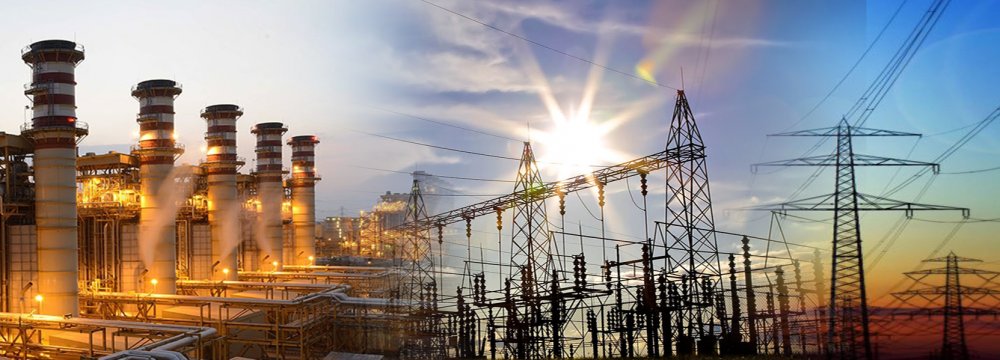
Tehran Power Grid Wastage Declines to 3.2%

"The notable 6% reduction has been the result of technical and non-technical measures, namely fighting illegal electricity use, renovating the network and replacing aerial bundle cables with the conventional bare conductors," Hossein Sabouri was also quoted as saying by NIOC's news portal on Saturday.
Giving a breakdown, the official added that the decrease cap be translated into $13 million of revenues for the power industry, which is the equivalent of selling 566,000 barrels of oil.
According to Sabouri, the cut has helped the country save 313 million cubic meters of natural gas, 28 million liters of diesel and 59 million liters of mazut during the period.
"More than 10% of electricity go to waste in the national grid because of dilapidated equipment. The infrastructure of the national electricity grid is of low quality," he said.
Putting the number of customers in Tehran at 4.5 million, the official said the figure accounts for 15% of the country's total subscribers.
"Power meters, especially for high-consumption subscribers, are checked routinely with greater precision," he said, highlighting the importance of replacing old meters with smart ones.
Sabouri said that to further stabilize electricity supply in the capital, state-owned Tehran Province Electricity Distribution Company has embarked on upgrading electrical systems in residential and commercial units, notably by using new metering systems that allow for reading consumption remotely and instantly.
The new system will utilize smart meters that record energy consumption more accurately compared to conventional meters and send data to regional electricity companies.
High-Efficiency Plants
According to Gholamreza Mehrdad, director for technical support at Iran's Thermal Power Plants Holding Company, new power plants with an efficiency of 60% will go on stream by the end of 2018.
Referring to the need for adding 5,000 megawatts of new electricity capacity to the country's grid, he noted that the efficiency of combined-cycle power stations stands at 50%, which help the country not only save natural gas for exports but also curb the use of environmentally-unfriendly fuels such as mazut.
Asked about dilapidated power plants run by TPPHC, the official said that of the 62,000 MW of electricity generated by TPPHC, 3,000 MW are produced in stations with less than 25% efficiency, although renovation of such plants are high on the agenda.
Commenting on the 37% average efficiency of the country's power plants, Mehrdad said, "The figure is not low. However, the bigger it gets, the more natural gas can be saved to be used either domestically or exported."
"During the hot summer days when gas consumption is low, the strategic fuel accounts for 95% of the stations' feedstock, but the figure falls to 40% in winter," he said.
In recent years, Iran has put greater emphasis on the participation of domestic and foreign investors in electricity generation, with projects underway to add 40,000 MW to the national grid.
The country is the largest exporter and importer of electricity in the Middle East and exports electricity to Pakistan, Turkey, Iraq and Afghanistan. Azerbaijan and Armenia supply electricity to Iran under a swap agreement.
Iran's nominal power generation capacity stands at approximately 77,000 MW.


Trump weighs using $2 billion in CHIPS Act funding for critical minerals

Codelco cuts 2025 copper forecast after El Teniente mine collapse

Electra converts debt, launches $30M raise to jumpstart stalled cobalt refinery

Barrick’s Reko Diq in line for $410M ADB backing

Abcourt readies Sleeping Giant mill to pour first gold since 2014

Nevada army depot to serve as base for first US strategic minerals stockpile

SQM boosts lithium supply plans as prices flick higher

Viridis unveils 200Mt initial reserve for Brazil rare earth project

Tailings could meet much of US critical mineral demand – study

Kyrgyzstan kicks off underground gold mining at Kumtor

Kyrgyzstan kicks off underground gold mining at Kumtor

KoBold Metals granted lithium exploration rights in Congo

Freeport Indonesia to wrap up Gresik plant repairs by early September

Energy Fuels soars on Vulcan Elements partnership

Northern Dynasty sticks to proposal in battle to lift Pebble mine veto

Giustra-backed mining firm teams up with informal miners in Colombia

Critical Metals signs agreement to supply rare earth to US government-funded facility

China extends rare earth controls to imported material

Galan Lithium proceeds with $13M financing for Argentina project

Kyrgyzstan kicks off underground gold mining at Kumtor

Freeport Indonesia to wrap up Gresik plant repairs by early September

Energy Fuels soars on Vulcan Elements partnership

Northern Dynasty sticks to proposal in battle to lift Pebble mine veto

Giustra-backed mining firm teams up with informal miners in Colombia

Critical Metals signs agreement to supply rare earth to US government-funded facility

China extends rare earth controls to imported material

Galan Lithium proceeds with $13M financing for Argentina project

Silver price touches $39 as market weighs rate cut outlook


















